Want to know what the best vlogging camera is? Whether you're tempted by a rugged action cam for capturing your off-piste adventures or a mirrorless model with a flip-up screen for recording content at home, we've tested them all to bring you this in-depth guide. (Looking for the best YouTube camera instead? Check out our separate guide on that).
Perhaps you've just started a YouTube channel, or maybe you're already an established Instagram creator – either way, you're likely to be in the market for a relatively small, powerful camera with good audio options. And luckily, we've rounded up the best options in our list below.
Vlogging has arguably never been more accessible than it is now. There are now lots of suitable cameras in all shapes and sizes, with different models to suit different budgets. That said there are several features which you'll find that all, or most, of the best vlogging cameras have. Regardless of whether you're new to all of this or a long-established YouTube celebrity, you'll likely be looking for a camera that is compact enough to take anywhere, but also capable of creating sharp, smooth footage when you need it – in a range of different lighting conditions.
Aside from budget, your personal style of shooting is probably the most important factor to consider. If you're somebody who is recording footage, ready to upload on the go, you'll be in need of a camera which has Wi-Fi and Bluetooth connectivity – and an easy-to-use app to go with it. If you're a walker and talker, cameras with fantastic image stabilization, a front-facing/flip-up screen to help you frame yourself, as well as a mic input, will be high on your list.
Size is also something to consider – with some caveats. Pocket-friendly cameras, as well as smartphones, are the obvious choice for quick, off-the-cuff videos, but they generally give you less creative control than cameras with interchangeable lenses. On the other hand, action cameras offer you a good solution if your adventures are on the rugged side.
At the moment, our top pick for the best vlogging camera is the Fujifilm X-S10. A fantastic all-round camera, it works well as both a stills and video camera, which is ideal if your content is mixed. It has a flexible set of 4K video specs which will help you to create fantastic video content.
But that's not to say that there might be a better option which works better for you and your budget - whether that's an all-round action camera like the GoPro Hero 9 Black or a stabilized gimbal camera like the DJI Osmo Pocket, our list below will help you find the best vlogging camera for every need.

Best vlogging cameras in 2021:
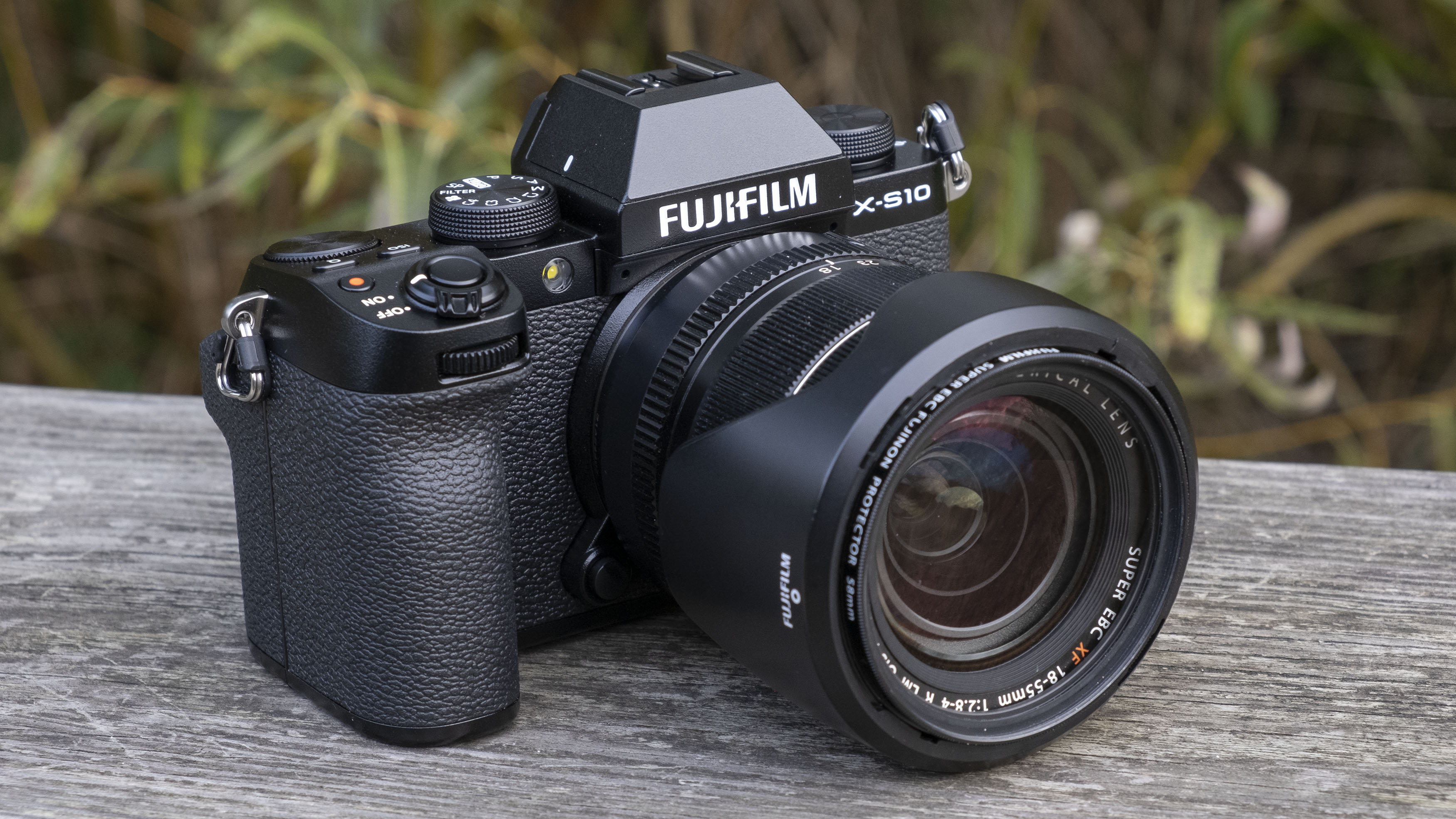
Arguably the best all-round mirrorless camera at this price point, the Fujifilm X-S10 is adept at lots of different types of shooting and subject. It’s a great vlogging camera, but if you’re somebody who also wants to shoot stills to supplement your video content, then it’s a great choice too. Inside the X-S10 is the tried-and-tested combination of a 26.1MP X-Trans CMOS 4 sensor and X-Processor 4, which we’ve already seen in the Fujifilm X-T4, but it also has the ability to record uncropped 4K/30p video.
For vloggers, there’s plenty of other video-friendly features to tempt you, too. For example, if you’re planning to do a lot of handheld video recording, the in-body image stabilization system (IBIS) is a real bonus. You’ve also got other useful features such as Full HD at up to 240p for a 10x slow motion effect, F-Log recording, the option to output 4:2:2 10-bit video too. All of that being in a small(isn) and light system makes it the ideal choice for vloggers on the go.
On top of all of that you’ve also got retro styling, a great, comfortable grip and a vari-angle screen that you can flip round to face you – perfect for framing yourself. It’s also available at a pretty wallet-friendly price, especially considering all the features you get for your cash.
- Read our in-depth Fujifilm X-S10 review


Don’t be fooled by the retro shell: the Olympus OM-D E-M5 Mark III is a top-spec vlogging camera, offering the ultimate combo of solid image quality, lightweight build and a comprehensive feature set. The hand-grip could be bigger, but the polycarbonate construction shaves 50g off the weight of its metal-bodied predecessor, making it a camera you can comfortably hold all day. The 20.4MP Four Thirds sensor – shared with the pro-grade E-M1 Mark II – delivers reliable continuous tracking thanks to on-chip phase detection autofocus, while handheld footage is usually super smooth, courtesy of class-leading image stabilization.
The option to shoot Cinema 4K at 24fps and a 237Mbps bit-rate is seriously impressive, while regular 4K footage at 30fps is routinely excellent, with lovely color rendition and good detail. Full HD at up to 120fps completes a comprehensive video offering. The vari-angle touchscreen makes framing a cinch, too, while the healthy Olympus lens catalogue opens up plenty of creative avenues. There’s no headphone jack, which will irk some videographers, but that sought-after external microphone port is there. Sure, it’s a bit expensive, but as a complete vlogging package it’s tough to beat.
- Read our in-depth Olympus OM-D E-M5 Mark III review

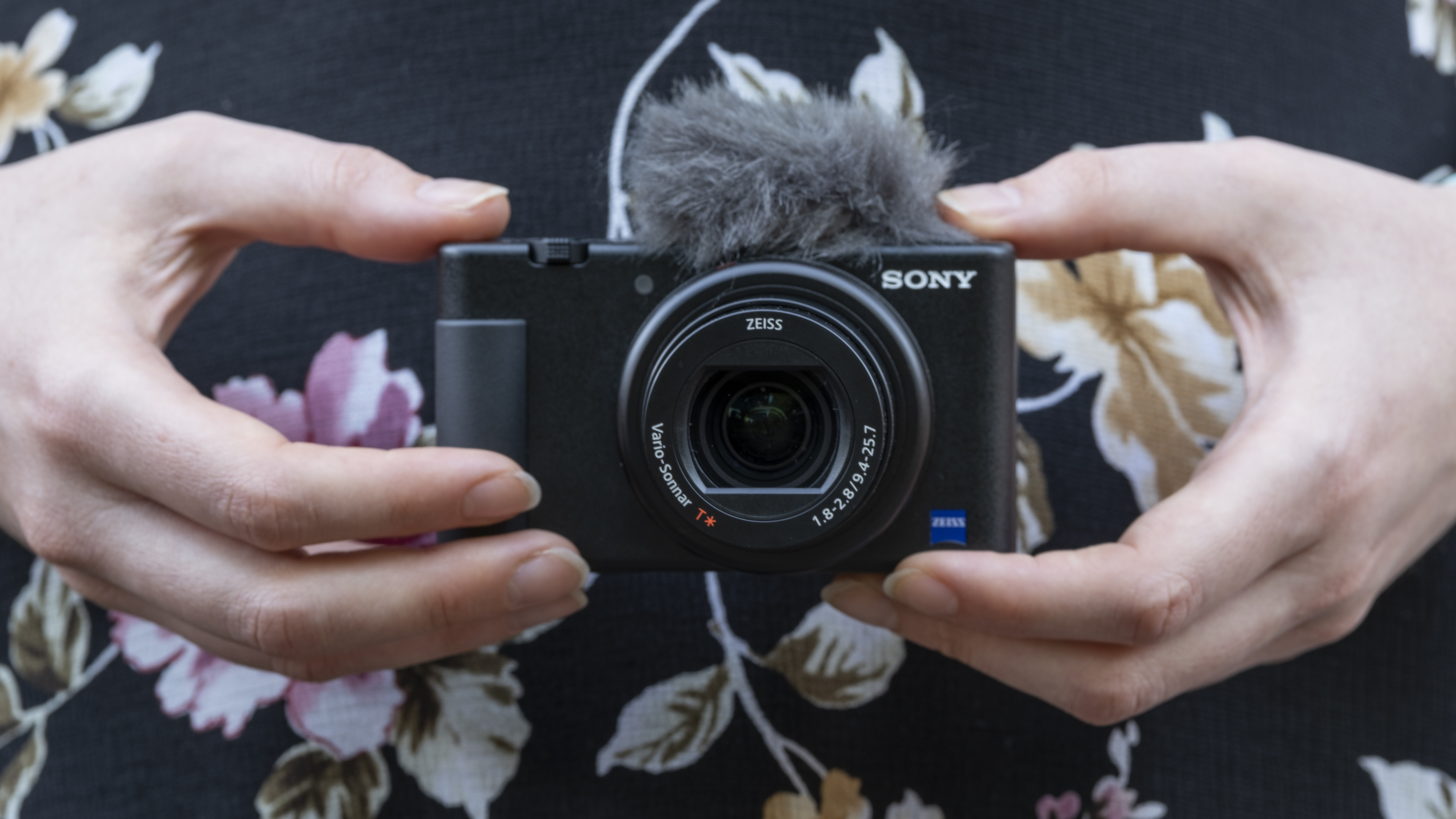
For a long time, the Canon G7 X Mark III was our favorite compact vlogging camera, but it's just been knocked off its perch by the excellent Sony ZV-1. By combining all of the best bits of Sony's RX100 series (for example, the RX100 VII's microphone port and autofocus, plus the RX100 V's bright 24-70mm f/1.8-2.8 lens) the ZV-1 really nails what most people want from a small vlogging camera. Sony's latest Real-time tracking and Eye AF are the best around and the ZV-1 also has a huge amount of depth for a compact camera, including a built-in ND filter and profiles like S-Log2 for those who want to embrace color grading. We still think the Olympus OM-D E-M5 Mark III's stabilization and image quality are better still, but you won't find a finer pocket vlogging camera than the Sony ZV-1.
- Read our in-depth Sony ZV-1 review


Fujifilm’s X-T200 is an attractive entry-level camera with plenty to offer for vloggers. Featuring the familiar retro styling of the X-series, the X-T200 is equipped with a 24.2MP APS-C sensor that captures uncropped 4K video at 30p by ‘downsampling’ from 6K footage. The results are impressively detailed and notably more dynamic than the camera’s 1080p efforts. It's a slight shame that digital image stabilization only works in Full HD, but use a lens with built-in IS and you won't miss it too much.
While the X-T200 can capture 1080p footage at up to 120fps, the new HDR video mode (which combines multiple frames to enhance dynamic range) is only offered up to 60fps. Despite these small quibbles, the X-T200 is brilliant to shoot with. The 3.5-inch vari-angle touchscreen is fantastically sharp and makes framing a joy, while a 3.5mm mini stereo input and USB-C port add welcome versatility. It’s a shame that subject tracking can’t be used for video, but the X-T200 is a versatile and capable vlogging option all the same and one of the best at its price.
- Read our in-depth Fujifilm X-T200 review

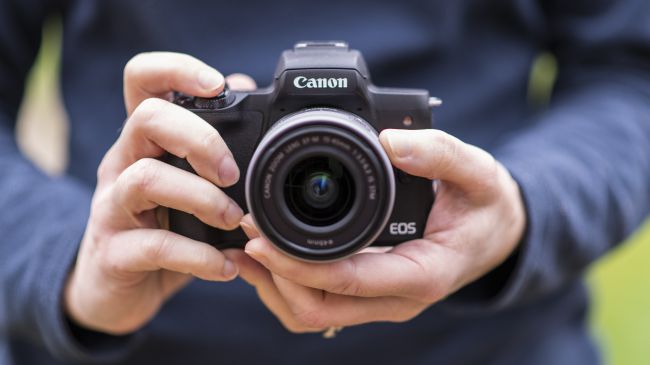
The incoming Canon EOS M50 Mark II offers several new features for vloggers, including the option to livestream directly to YouTube. But it's not available worldwide and isn't a huge upgrade on the EOS M50, which makes this older model a good buy for those who mainly want to shoot in 1080p. This is because the M50 (and M50 Mark II) have a significant 1.6x crop when shooting 4K footage, which means you’ll have a narrow field of view even when filming at a wide focal length. While we wait for the Mark II, the Mark I remains an excellent vlogging option for those happy to record in 1080p – and it’s now better value than ever. Set aside that crop factor and you get a 24.1MP APS-C CMOS sensor, powered by Canon’s capable DIGIC 8 processor. Sure, the M50 doesn’t offer the advanced video profiles found on premium alternatives, but the key point is that it’s compact and accessible. With a microphone input, vari-angle touchscreen and range of connectivity options in the mix, the M50 is still a stellar starter cam for budding vloggers.
- Read our in-depth Canon EOS M50 review


If video quality is your priority, then it's hard to beat the Fujifilm X-T4 as a vlogging all-rounder. Sure, some full-frame cameras can still edge it for dynamic range and high ISO performance, but it's not a huge gap and the X-T4 offers a smaller overall setup that's ideal for travel. One of the best hybrid shooters around, the X-T4 brings significant upgrades on the X-T3 that include in-body image stabilization (IBIS), a bigger battery and improved autofocus. The latter is quick and reliable for both stills and video, though you'll preferably want to use it with some of Fujifilm's more recent glass, like the XF16-80mm f4 R OIS, for the best results. With a microphone input, front-facing screen, weather-sealing and the ability to shoot Cinema 4K videos up to 60fps, the X-T4 is a great all-round vlogging option for those who want a camera that can take care of both their stills and video needs.
- Read our in-depth Fujifilm X-T4 review


Sony’s Alpha cameras have long been popular with vloggers, and the A6400 is no exception. 4K is a given, while support for S-log3 and S-log2 should please post-producers. There’s 4K HDR (HLG) for instant playback and Sony’s Imaging Edge Mobile app makes it possible to transfer video to your smartphone. Front-on framing is straightforward, too, thanks to a flip-up 16:9 touchscreen, while the A6400’s advanced autofocus system serves up superb subject tracking. Port options, though, will put some vloggers off: as with the 6300 before it, there’s a microphone input but no headphone socket on the A6400. Many won’t monitor audio as they record, but it’s worth noting if interviews are your thing. There’s no in-body image stabilization either, and many of Sony’s prime lenses don’t feature it – not a problem if you use a tripod or go for that handheld aesthetic.
- Read our in-depth Sony A6400 review

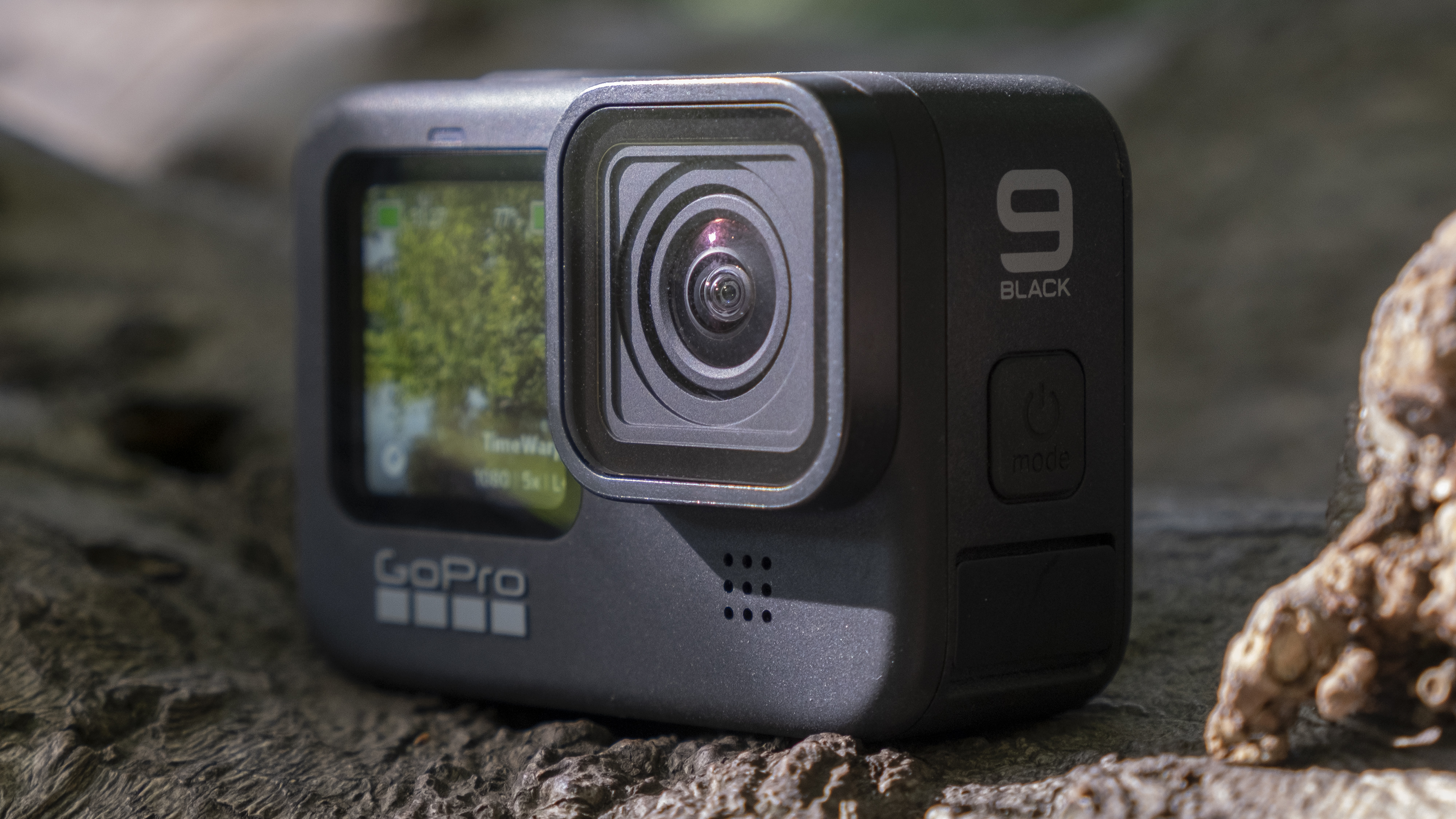
GoPro’s action cameras have long been popular with vloggers. And while it might have some rough edges, the Hero 9 Black is GoPro’s most powerful and versatile effort to date – even if older models offer better value.
A new 23.6MP sensor is capable of shooting 5K/30p video and, in the right conditions, can capture more detail than any GoPro so far. But the bigger news is that the most powerful HyperSmooth Boost stabilization mode can now shoot silky smooth and stable footage at all resolutions and frame-rates.
The other headline feature is the fresh front-facing color display. Though it’s a little laggy, the second screen is a boon for vloggers, offering an easy way to ensure their face stays the frame. The square aspect ration means it isn’t a true preview, but it’s nevertheless a useful for addition for those shooting pieces to camera.
Other upgrades are less dramatic: battery life is marginally improved, while new Power Tools introduce a handful of neat software recording tricks. Wind noise is handled better, too, with enhanced voice isolation. It’s not flawless – the rear touchscreen is disappointingly unresponsive – but the GoPro Hero 9 Black is the best rugged vlogging camera you can buy.
- Read our in-depth GoPro Hero 9 Black Review
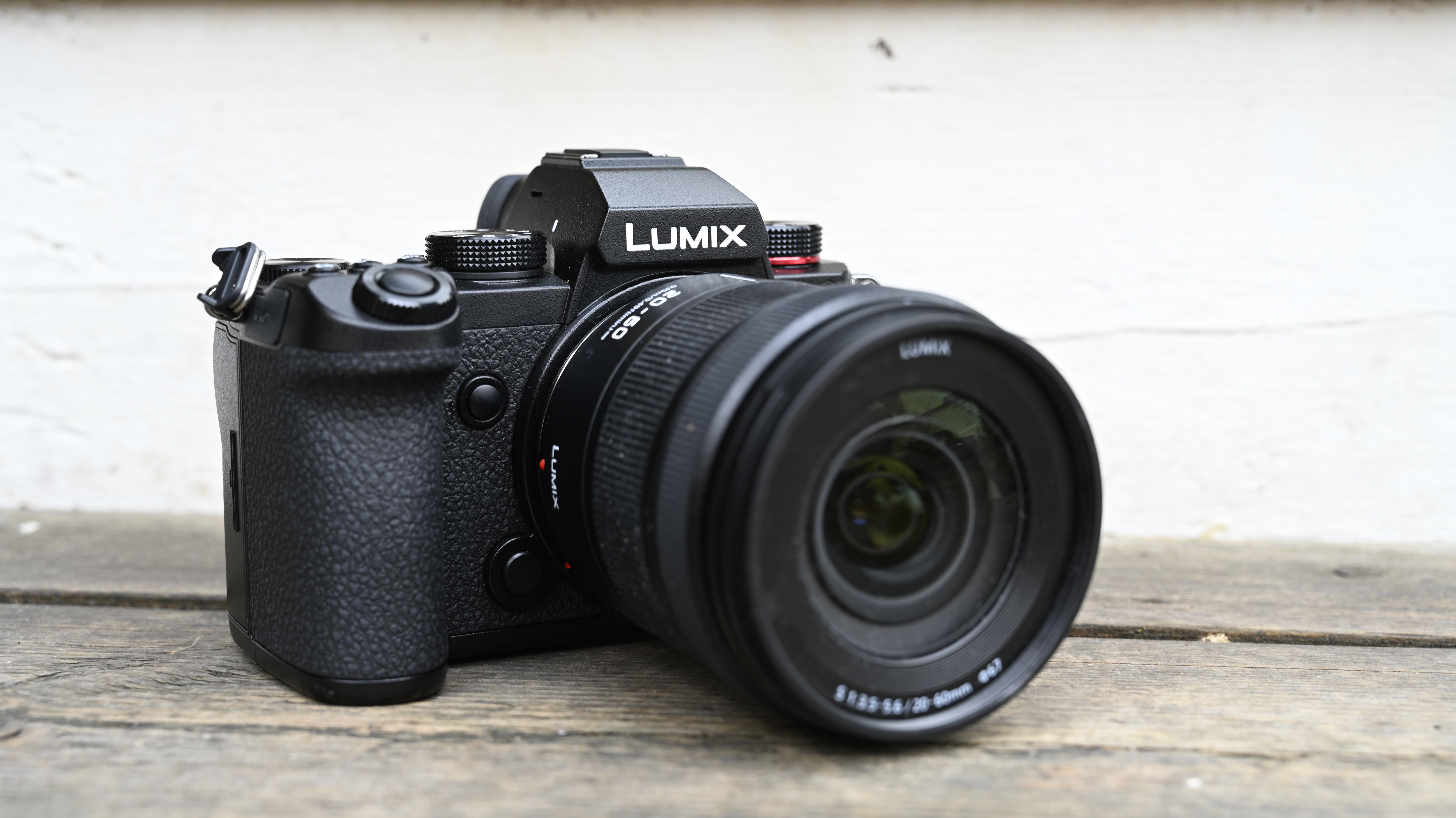
Offering full-frame performance in a Micro Four Thirds body, the Panasonic Lumix S5 is a fantastic hybrid that should appeal to a wide variety of creators.
Smaller and lighter than the GH5 yet equipped with a full-frame mirrorless sensor, the Lumix S5 sits extremely comfortably in the hand and features a comprehensive array of buttons and dials. And vloggers will welcome the arrival of a fully articulating touchscreen which can flip out to face forwards.
In fact, the S5 offers plenty to lure in video creators. It can capture 10-bit 4K internally, cropped 4K at 60p and uncropped 4K at 30p. It also supports V-Log, time-lapses, dual native ISO and anamorphic 4K. In-body image stabilization keeps things nice and smooth and, although the autofocus is still contrast-based, the AF-C setting is more than capable of following subjects while walking and talking.
The only real compromise – besides a 30-minute limit on 10-bit clips – is the inclusion of a Micro HDMI port, rather than a full-size one. And it might be worth considering a second battery if you’ll be recording all day. But with Wi-Fi and Bluetooth on-board, as well as a 20-60mm kit lens that’s ideal for video, the S5 should tick almost every box for vloggers.
- Read our in-depth Panasonic Lumix S5 review

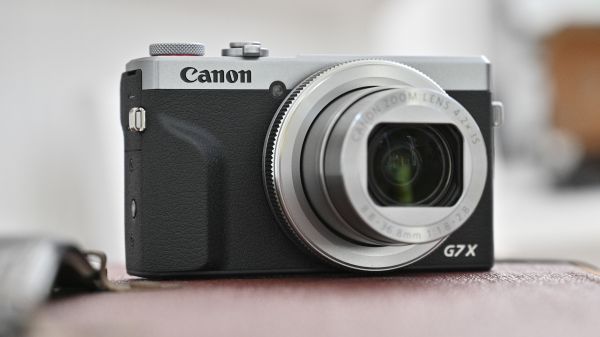
Long popular with vloggers, Canon’s G7X range has kicked it up a notch with the Mark III. There’s a very capable 20.1 megapixel one-inch sensor, but now it’s also equipped with uncropped 4K video recording, along with something that's been requested many times – a microphone socket.
This means you can elevate the sound above and beyond the internal mic’s offering, if you want to. Even better, the G7X III can stream directly to YouTube – which is, right now, an advantage over the Sony ZV-1 – so you can live vlog whatever’s happening around you, without having to downgrade to using your smartphone. USB charging is another great feature which means you can give it power bursts on the go – particularly prudent if you’ve been shooting a lot of 4K video.
The G7X Mark III's contrast detection-only AF and more limited tilting screen mean it's been nudged down this list by the Sony ZV-1, but it's also more affordable and is still well worth considering if you need a pocket vlogging rocket.
- Read our in-depth Canon PowerShot G7 X Mark III review

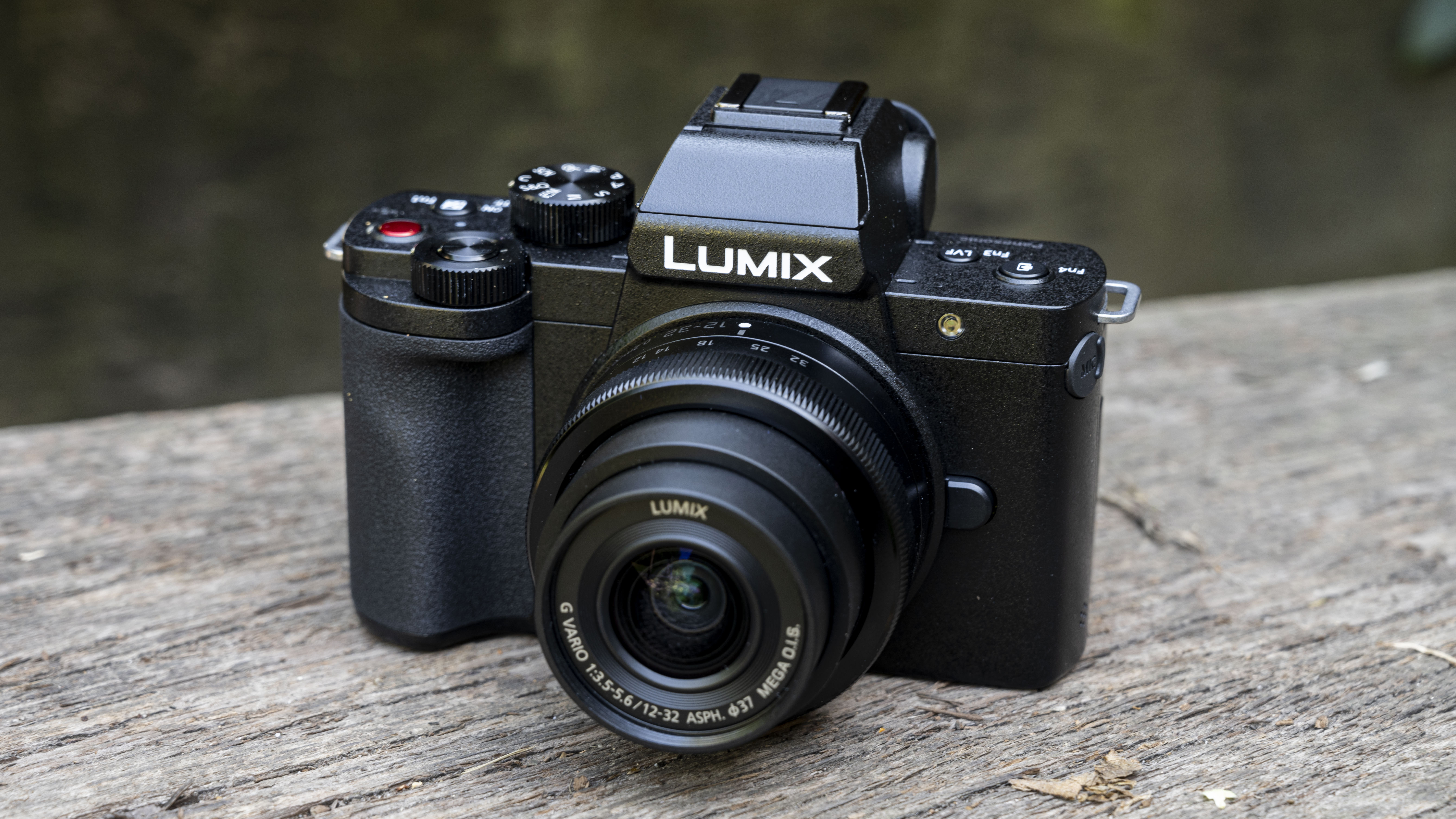
Touted by Panasonic as “the ultimate vlogging camera”, budding videographers are bound to love the G100’s compact form. Built small and light for portability, it’s the world’s smallest camera with an articulating touchscreen. And despite its size, the G100 is also packed with video-focused features.
As you’d expect, there’s 4K/30p video recording – albeit with a crop that limits its use as self-recording tool – as well as an arsenal of useful social media tools, including a video selfie mode, a sharing frame marker and a dedicated button for transferring footage to your smartphone.
Most significant, though, is the new audio system: a first on a mirrorless camera, Ozo Audio by Nokia uses three microphones to pick up sound wherever it’s coming from – including from behind – and it does an excellent job of prioritizing audio, even in noisy situations.
The 20.3MP sensor produces vibrant, detailed footage in most conditions, struggling only in low light. And, while image stabilization isn’t as smooth as you’d get with a gimbal, the five-axis hybrid system is still suitable for everyday recording. Add a real-world battery life of 40-45 minutes video shooting and you’ve got an attractive vlogging option.
- Read our in-depth Panasonic G100 review

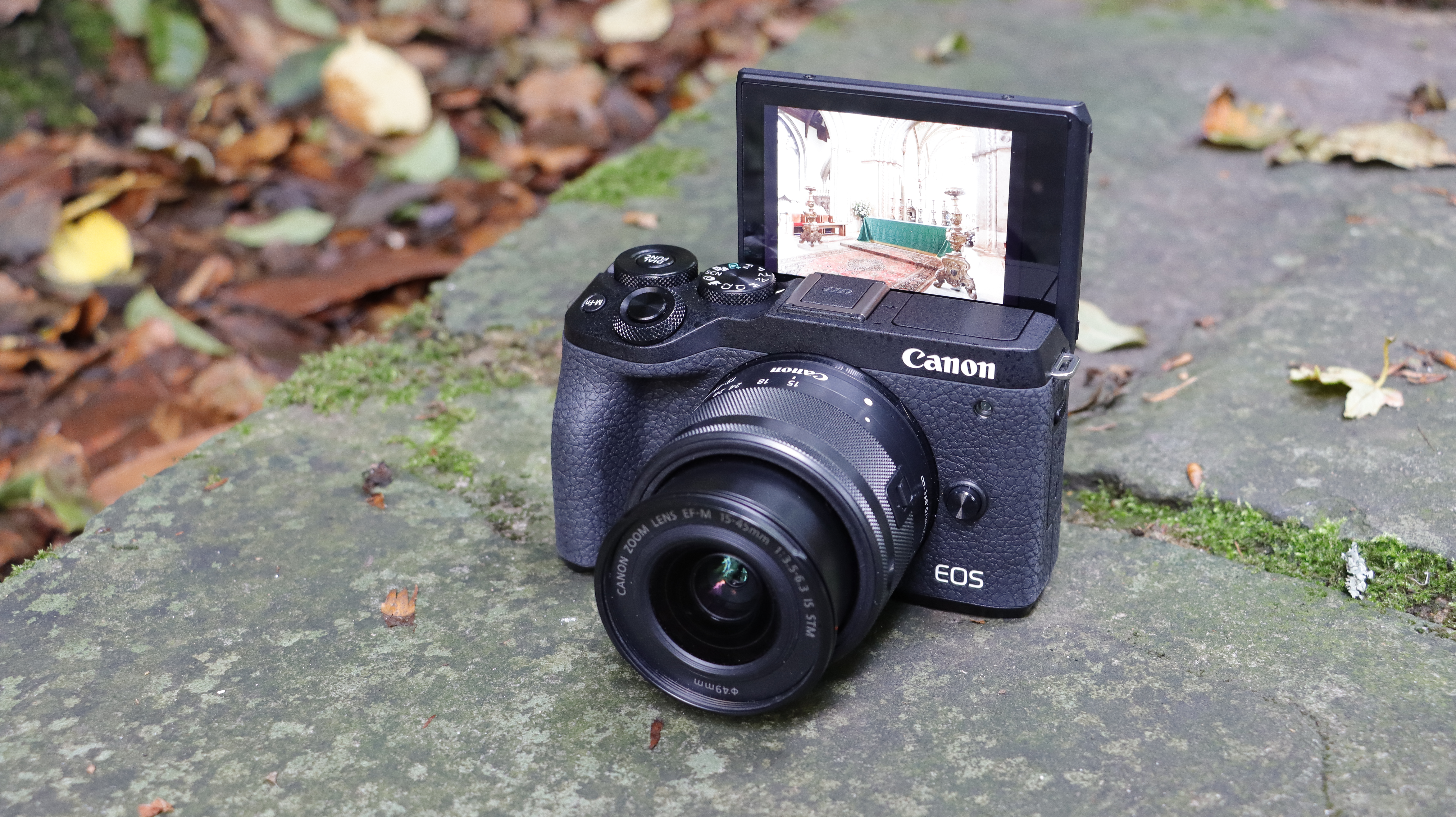
Canon really is the king of vlogging cameras, with several making our list thanks to a fantastic range of features and options. The Canon EOS Mark II is the latest iteration of its M series of compact system cameras, and is small and light enough to be a great travel companion.
However, in its miniature body, it’s housing the same high-resolution 32.5 megapixel sensor as the 90D DSLR (see below). With Dual Pixel CMOS AF and uncropped 4K video recording, it’s one you could use to kick your vlogs up a gear. There’s also a microphone input socket, plus a screen that faces all the way forward for perfect framing.
- Read our in-depth Canon EOS M6 Mark II review

Alternatively...
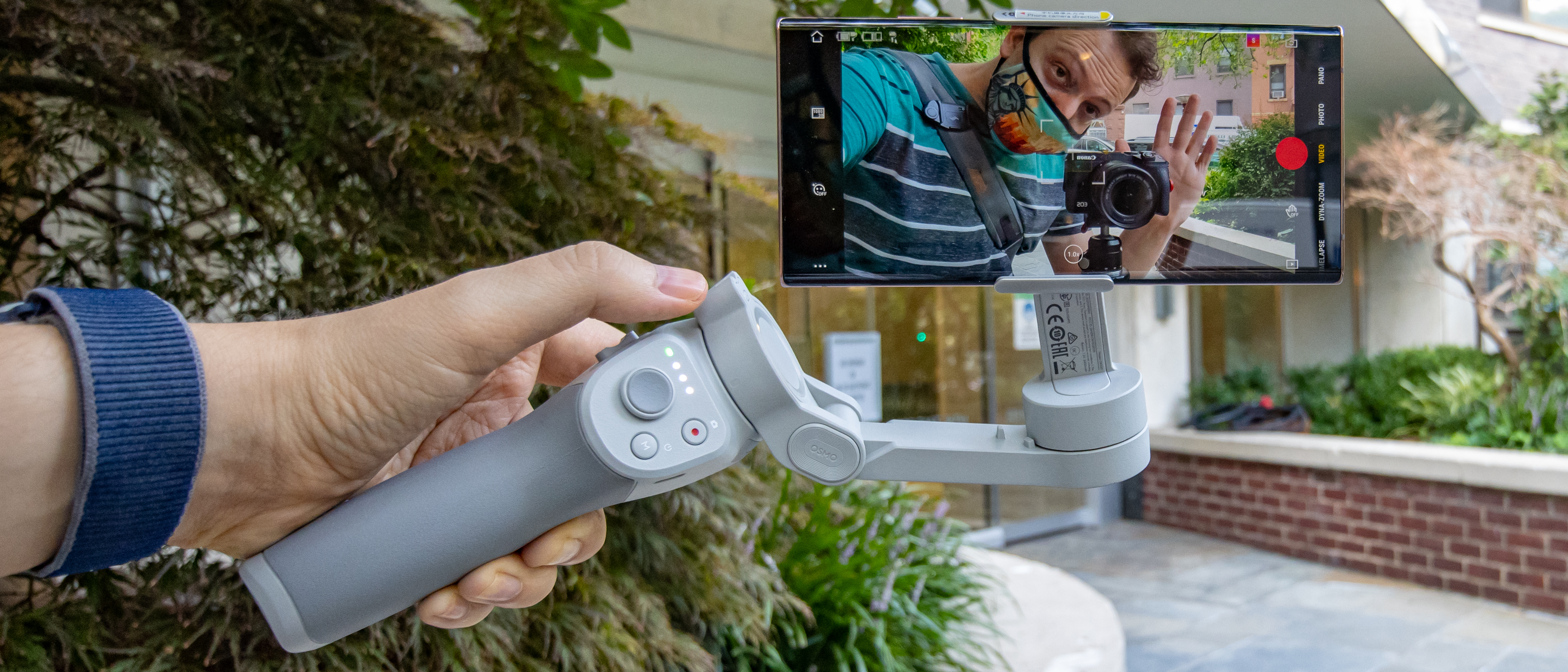
If you don’t want to invest in a dedicated camera for your vlogging, but you still want to take your footage up a notch, the DJI OM 4 is a great alternative option.
It uses a 3-axis gimbal to create smooth footage straight from your existing phone, simply by attaching it to the gimbal via magnets.
Other benefits include the ability to fold down the gimbal for easier transportation, quick release to allow you to use your phone for other things – such as making calls – without having to faff around too much with the set up.
It fits around most phones, including large models such as the Samsung Galaxy Note 20 Ultra, but it can struggle with thicker cases.
- Read our in-depth DJI OM 4 review

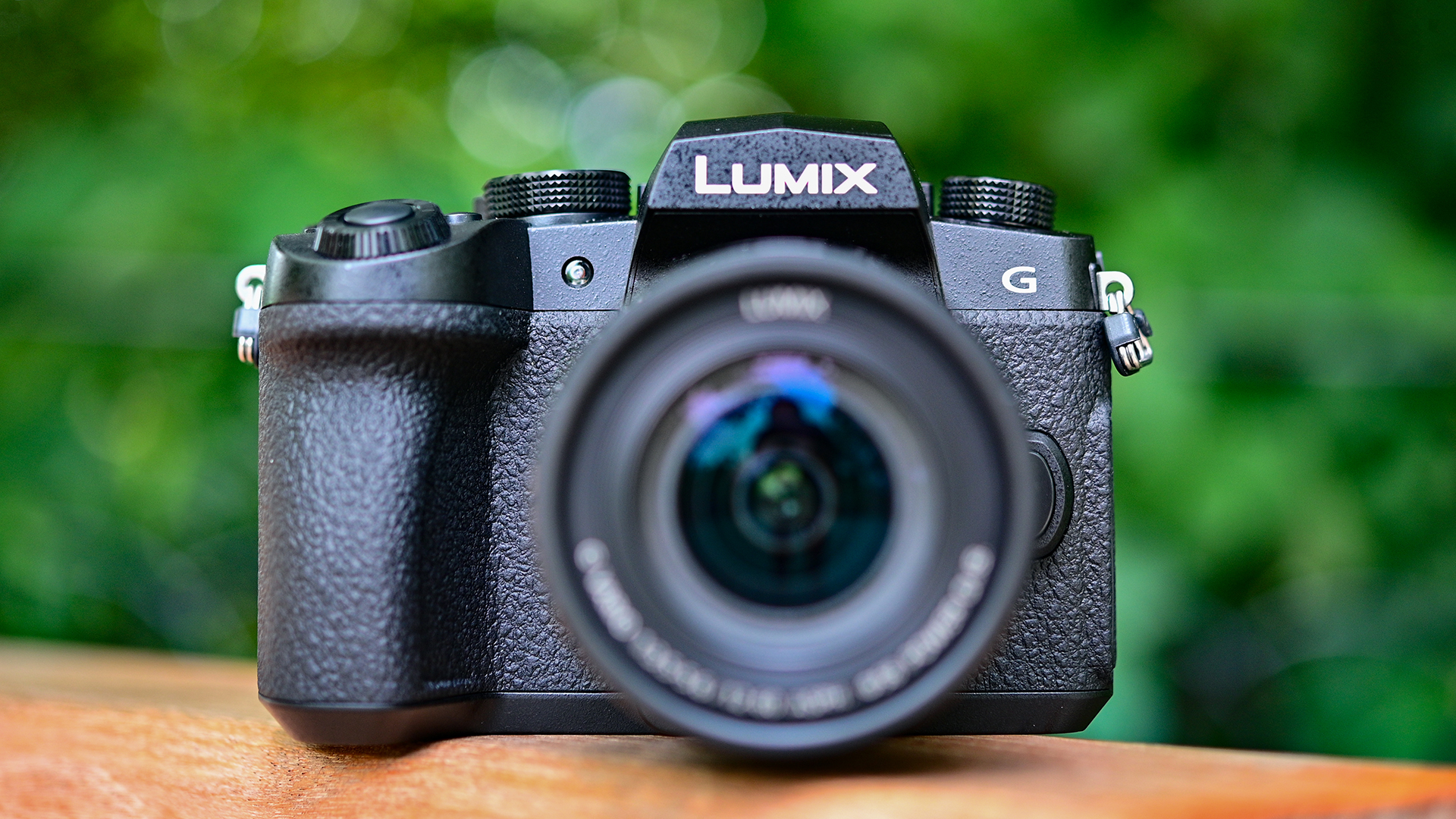
The recent arrival of the Panasonic G100 (see above) has pushed the G95/G90 down our vlogging camera pecking order a little, but it's a very different camera that will remain on sale and brings several advantages.
While it's much larger than the G100, this does mean it has room to pack in sensor-based stabilization, making it a better option for walkaround videos. The G95 / G90 also inherits the flagship Panasonic G9's sensor, and squeezes in an impressive array of video-friendly features, including microphone and headphone sockets for perfect sound.
There are tonnes of lenses available for the Micro Four Thirds system, so there’s something for every job, while the 14-140mm f/3.5-5.6 lens which you can buy it with as part of a kit as a great all-rounder for lots of different shooting scenarios. A fully-articulating touchscreen is ideal for presenting to camera, while there’s also advanced video features such as 4K shooting and V-Log recording, too. Keep an eye on the G95/G90's prices, because it could become something of a bargain.
- Read our in-depth Panasonic G90/G95 review

- Discover our best compact camera 2021 choices

What video quality should you be looking for?
Whatever type of camera you go for, considering video quality will likely be top of your list. At the absolute minimum you’ll be looking to shoot in Full HD (1080p), while 4K is becoming increasingly common. Although the higher resolution format will take up more space on your hard drive, it should future-proof your captures a little more than Full HD.
Other specifications to pay attention to include built-in WiFi for sharing your vlogs on the move, a fully articulating or tilting monitor for helping to frame your face, a built-in microphone socket for enhancing sound quality.
We’ve picked out eight top cameras of various shapes, sizes and attributes to suit different styles of vlogging – as well as highlighting some that will fit into your all-round stills and video shooting requirements.
- Best camera
- Best DSLR
- Best mirrorless camera
- Best 4K camera
- Best full-frame camera
- Best compact camera
- What camera should I buy?
- Mirrorless vs DSLR: 10 key differences
- Best travel tripod 2020: the 10 finest lightweight tripods for your camera

from TechRadar: Photography & video capture news https://ift.tt/2SKnCKX
via IFTTT






0 kommenttia:
Lähetä kommentti